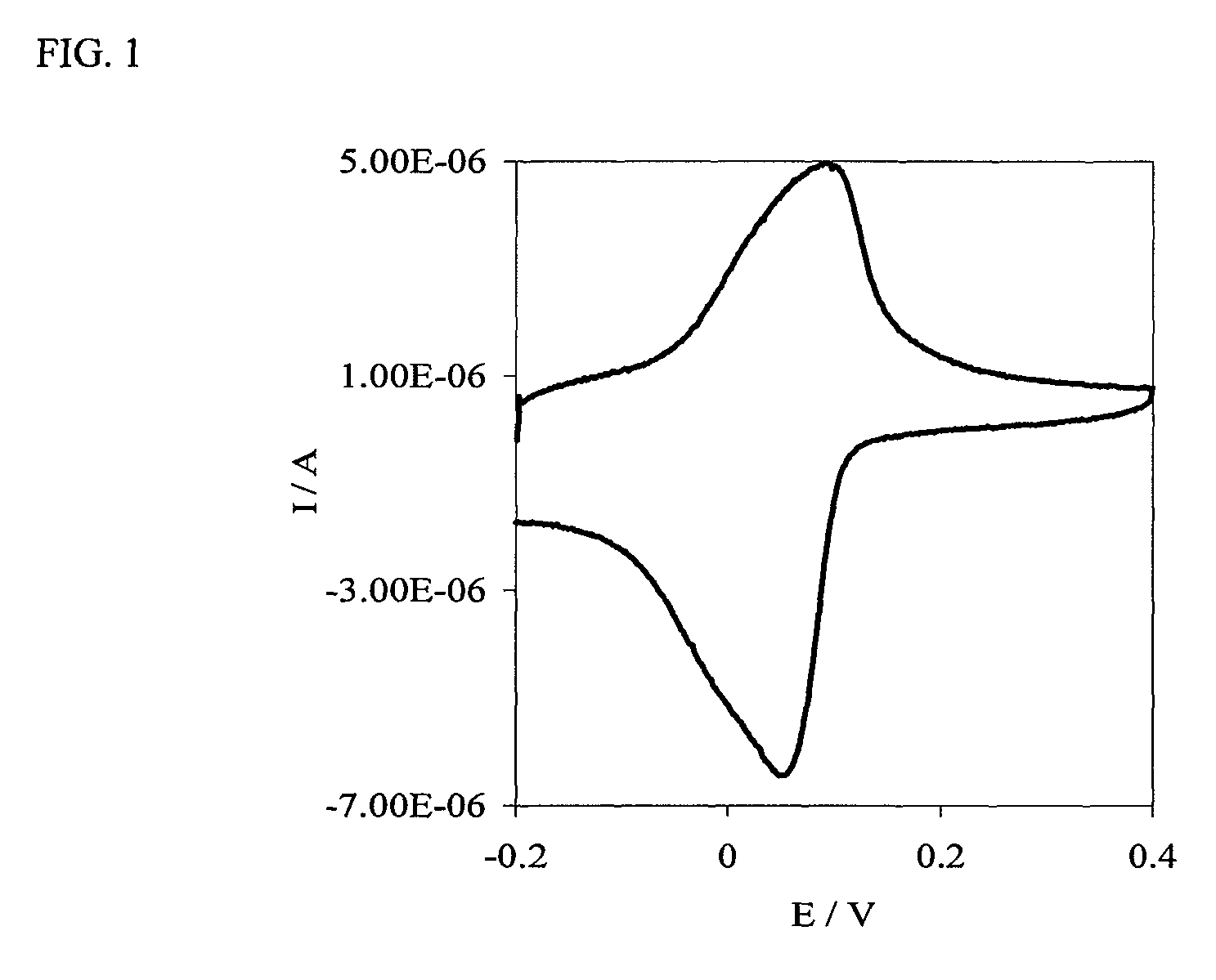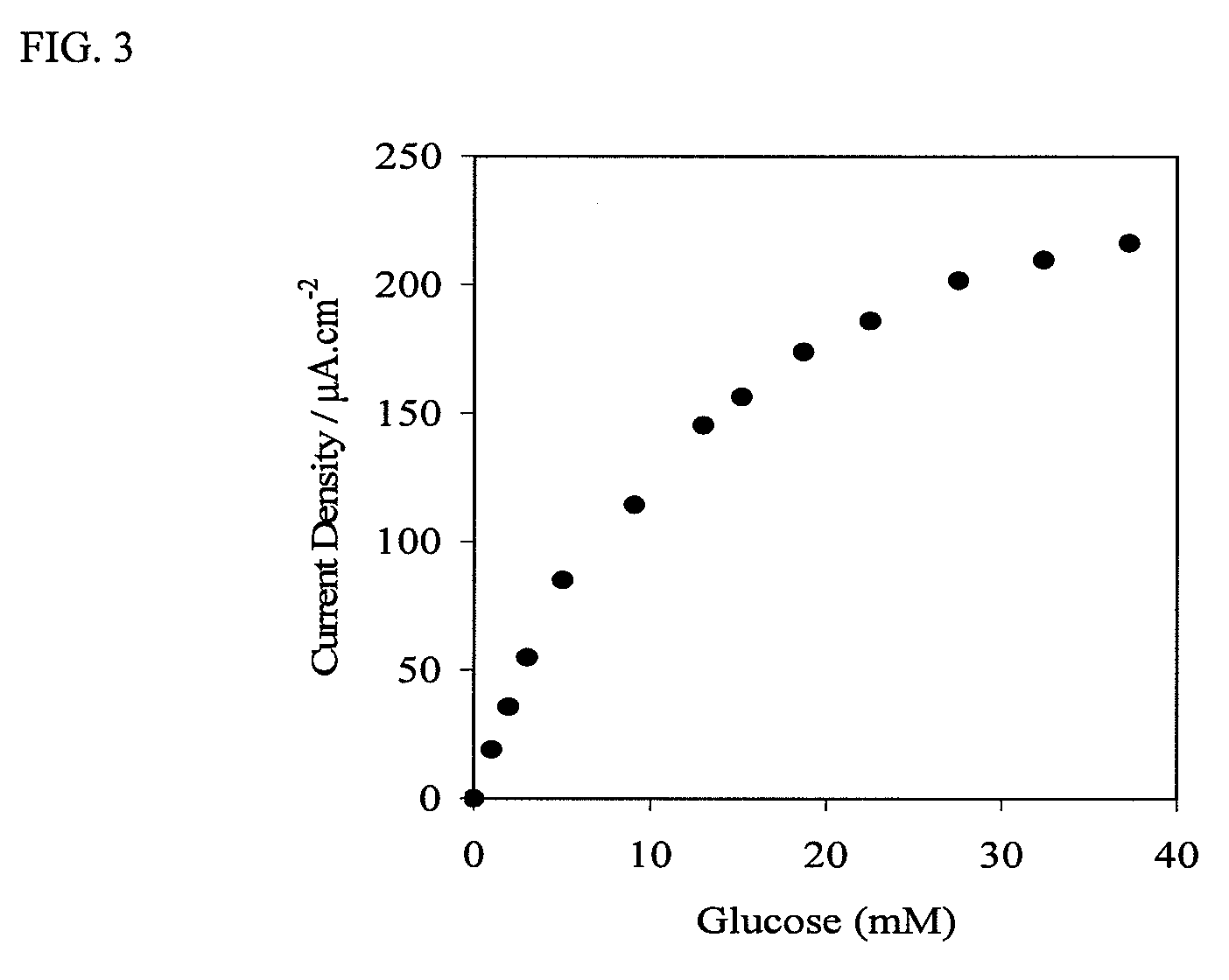Crosslinked adduct of polyaniline and polymer acid containing redox enzyme for electrochemical sensor
a technology of redox enzyme and polyaniline, applied in the field of sensors, can solve the problems of lowering conduction, affecting the redox enzyme activity, and causing hypoglycemia to be fatal,
- Summary
- Abstract
- Description
- Claims
- Application Information
AI Technical Summary
Benefits of technology
Problems solved by technology
Method used
Image
Examples
example
A polyaniline-based, electron-conducting, glucose permeable redox hydrogel was formed in one step at pH 7.2 by crosslinking a PAAMSA templated PANI with PEGDGE. Incorporation of glucose oxidase in the hydrogel by co-crosslinking in the same step led to electrical wiring of the enzyme and led to the formation of a glucose electrooxidation catalyst, allowing the electrooxidation of glucose at a current density of 225 μA·cm−2 at 0.3 V versus Ag / AgCl. FIG. 4 is a representation of the redox hydrogel.
A PANI-GOx bioelectrocatalyst was prepared, according to the following description, at a neutral pH in one pot in a single step. Emeraldine PANI was used as the electrically conducting polymer, PAAMSA was used as the polymer acid, PEGDGE was used as the water-soluble diepoxide, and GOx was used as the redox enzyme.
The emeraldine PANI used was made by oxidative template polymerization of aniline on water-dissolved poly(2-acrylamido-2-methyl-1-propane sulfonic acid), PAAMSA with ammonium persu...
PUM
| Property | Measurement | Unit |
|---|---|---|
| current density | aaaaa | aaaaa |
| current densities | aaaaa | aaaaa |
| current density | aaaaa | aaaaa |
Abstract
Description
Claims
Application Information
 Login to View More
Login to View More - R&D
- Intellectual Property
- Life Sciences
- Materials
- Tech Scout
- Unparalleled Data Quality
- Higher Quality Content
- 60% Fewer Hallucinations
Browse by: Latest US Patents, China's latest patents, Technical Efficacy Thesaurus, Application Domain, Technology Topic, Popular Technical Reports.
© 2025 PatSnap. All rights reserved.Legal|Privacy policy|Modern Slavery Act Transparency Statement|Sitemap|About US| Contact US: help@patsnap.com



